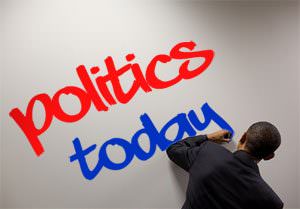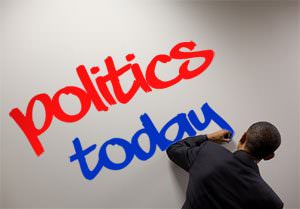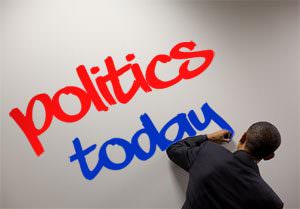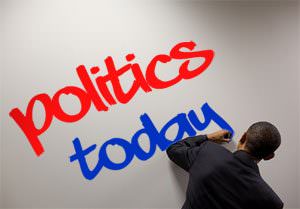Kasia Anderson on Barbara Walters
"Audition" details the life story, both in front of the camera and behind the scenes, of a pioneering journalist-entertainer who reported the news while making it in ways both admirable and troubling.
Somewhere around the middle of “Audition: A Memoir,” Barbara Walters lets fly with what might be the most startling comment in her massive autobiography. No, it’s not her much ballyhooed revelation — dished out with the kind of peep-show sensibility that can only come from years of coaxing confessions from enough celebrities, convicts and world leaders (or various combinations thereof) to populate a small island nation — that she was once embroiled in a lengthy affair with a married black Republican legislator, Sen. Edward Brooke. Well-placed pickups of that tabloid-baiting teaser no doubt contributed to the book’s impressive sales figures, currently hovering near the half-million mark, but it’s hardly the most compelling detail from Walters’ secret history.
Rather, she makes a more surprising statement when she declares, in an unintentionally ironic or perhaps falsely modest aside: “Journalists, I felt, are supposed to report the news, not be the news.” That’s an admirable ideal, and one that many in her profession also esteem highly, along with that other quaint journalistic relic, objectivity. But considering the fact that she offers this opinion while describing, in a 624-page behemoth of a best-seller dedicated to all things Barbara Walters, the controversy she sparked when she scored an unprecedented $5-million deal to jump from NBC to ABC in 1976, it reads more like lip service than a personal motto. If there’s anyone whose experience demonstrates how certain broadcast journalists have become newsmakers themselves in recent decades, it’s Walters; in fact, she practically invented this subspecies of celebrity. But that’s just one of many contradictions in her lengthy and somewhat unruly life story, which is as much a story about the television news industry as it is about the veteran newswoman herself.
Reading “Audition” is a bit like watching Walters on “The View,” the female-focused morning coffee klatch she has presided over since its launch on ABC in 1997. Despite the show’s central conceit — that the proverbial fourth wall has come down between the hostesses in their homelike setting and the audience — “The View” is an exercise in staged intimacy and controlled spontaneity. Walters admits in her new book that she and her four co-stars plan most of their discussions before each episode, and they’re definitely not all best friends (they just play them on TV), but when the cameras roll, the pantomime begins: Oh, hello — you’ve just caught me and my four besties here, who happen to represent a marketably diverse range of target demographics, chatting over our brand-name morning coffee about today’s most compelling political and cultural news items!
Throughout all the show’s ups and downs, Walters has maintained an air of steady, if somewhat forced, amicability, mugging for the camera when tensions run high, gamely handling bad PR when they boil over, and generally playing the part of den mother for her sometimes prickly protégés. But her act on “The View” engenders the unsettling feeling that she’s trying a little too hard to be “just one of the girls” in a vaguely incongruous way, one which doesn’t quite jibe with her self-described former incarnation as a scrappy go-getter in a power pantsuit who landed her dream job years ago as the country’s first female network news co-anchor. Whither pantsuit-wearing Walters? Comparatively speaking, the image she presents on “The View” seems about as empowering as a Virginia Slims ad.
Unfortunately, she adopts a similar pose in “Audition,” especially when discussing her personal life. She seems unable at times to break out of cutesy-girly mode, as though she were composing a script for a TV dramedy about her life that was guaranteed neither to scandalize advertisers nor the good people of Peoria — in the 1950s. For example, referring to her waifish figure as a young girl, she says in one aw-shucks aside: “My nickname, as I’ve told you, was ‘Skinnymalinkydink.’ (If only someone would call me that today — and mean it!)” Or, later on, again returning to a discussion of her appearance, she muses: “I have sometimes said that the ‘Specials’ are primarily a retrospective of my hairstyles. How many hairdos can a girl have?” How many indeed. Is this the same woman who talks elsewhere about how she dashed off to meet with controversial heads of state in South America, Asia and the Middle East without batting an eye, and who refused to let her male colleagues shut her out of the running for career-making scoops and top assignments?
In her defense, Walters never claims to have ironclad confidence or to be particularly clear about who she is or what she wants, except in her working life. She also points out more than once in her book that those who make excellent interviewers aren’t always the best on the other side of the transaction and vice versa, perhaps as a form of disclaimer about how she fares as her own interviewee, in a way, in “Audition.” Her execution isn’t bad, albeit uneven in patches, and regardless of its literary merit the story of Walters’ life is undeniably interesting, simply by virtue of all the places she has been and all the people with whom she’s crossed paths. Additionally, it’s not unreasonable for a woman who has lived her life in the public eye for decades, writing and performing for mainstream TV audiences, to stick to what has worked for her in the past when writing about herself.
However, for the purpose at hand, it’s safe to say that autobiographical nonfiction, unlike broadcast TV, is not Barbara Walters’ ideal medium. For one, although her memoir generally makes for an engaging read, she jumps around chronologically so much that she loses touch with her narrative at times, leaving her audience a bit out at sea as to what year, country, job, husband or hairstyle she might be referring in a given scene. This confusion is compounded by her coy refusal to divulge her age, which could provide additional guideposts along the shifting timeline.
Plus, as she admits, she finds it very difficult to delve into the painful periods of her history, including her three marriages and subsequent divorces; problems with her adopted daughter; her mother’s bitter disappointment with her distant father and his risky passion for producing stage shows around the country; her lifelong guilt about her functionally impaired older sister; and losses of family members and friends. Usually, those passages lean more heavily on description than on feeling; a profound sense of affection breaks through in brief glimmers when she discusses her family, but it vanishes too quickly behind her customary veneer of restrained congeniality.She also seems concerned with what people she mentions in the book might think of their portrayals, perhaps because she’s still very active in her career and social life, but as a result, nearly every major character is pronounced to be a “smart,” “truly kind, “attractive” or “close” and cherished friend with whom she exchanges holiday cards every year and hopes to lunch with soon at 21. Hardly ever does she really let it rip, which may be safer but also makes for fewer chances to honestly lay herself out on the page. Maybe she needs to ask herself some tougher questions.
That said, Walters wins points for at least appearing willing to delve into her less camera-ready sides (she looks best shot from the left, Laurence Olivier once told her) when it comes to exploring her own fault lines and vulnerabilities, which may especially endear her to female fans and writers who wonder how she did what she did to get where she got. She describes a recurring difficulty with insecurity that has dogged her throughout her life with respect to her financial and emotional safety, a certain thin-skinned quality that seems strange considering her chosen career, but then she always has scripts and teleprompters to guide her on the job. Not so off-screen. She hasn’t always dealt well with criticism or parody; in fact, it took her daughter’s admonition that she needed to “lighten up” in order to get over her initial mortification after seeing Gilda Radner mimic her, as “Baba Wawa,” on “Saturday Night Live.”
In one of many moments in which personality traits and formative traumas are linked to her destiny as a celebrity (a theme she says she draws upon in her interviews with other heroes of contemporary popular culture), Walters says her deep-set fear has always served as a major driving force behind her professional and private ventures and inspired her book title, even as it has taken its toll at times:
“Some may call it ambition. I can live with that. Some may call it insecurity, although that is such a boring, common label, like being called shy, that means little. But as I look back, it feels to me that my life has been one long audition — an attempt to make a difference and to be accepted.”
This rather ham-fisted metaphor about auditioning for others’ approval and personal success, a kind of primordial dependence on others shared by movie stars, politicians and TV anchors, becomes trying through sheer repetition in Walters’ book, but it does lend her an air of accessibility. And people like her, by definition, are not rewarded for letting their hair down; in fact, they have an army of stylists and makeup artists, not to mention producers, agents and publicists, standing by around the clock to make sure they never do. Priming the public with flashes of stars’ lives behind the scenes is par for the course, but after years of following career paths that equate performing with huge payoffs in every sense, that doesn’t mean those stars will want, or even know how, to drop the act.
Plus, they may not really have a strong sense of “authentic” identity in the first place, as Walters herself admits. Indeed, while musing about her time as a young reporter, she describes a long-standing sense that she has harbored at least two distinct personas throughout her working life: “These early interviews highlighted another difference between my professional self and my private self, a difference I’ve never understood.” (Her “professional self” is decisive and more outgoing, while her “private self” is far more reserved and tends to misplace things.) In an even more confounding moment, she muses, during a passage about the strange confidence that comes with reporting in dangerous circumstances, “For a time you put your real life aside, or maybe this is your real life.” Huh?
Thankfully, these existential hiccups are few and far between. Walters becomes slightly more animated and assured while describing her more significant relationships and is clearly aware that she is expected to pony up about her love life or some readers might feel cheated. So she dutifully delivers, admitting to her covert entanglement with the aforementioned Sen. Brooke and detailing other relationships with Roy Cohn, Sen. John Warner and Alan Greenspan and with her three husbands, Robert Katz, Lee Guber and Merv Adelson. Some of these anecdotes, like her stories about her family, form a more fleshed-out portrait of the author, almost in spite of herself, without the pithy, greeting-card tone she tends toward when handling delicate subject matter. Getting warmer. But not for long — she seems relieved to close the book on her private affairs when she abruptly announces, about two-thirds of her way through the autobiography, “I think that is enough about my personal life.”
So far, none of this material seems all that unusual for a celebrity memoir, nor does it explain why Walters’ “Audition” has succeeded. That’s a question worth puzzling over now that it is a certified publishing hit, and the answer, no doubt, has to do with celebrity — in terms of both the boldfaced names she includes in her book and Walters herself. To investigate further will require giving Walters her due, putting aside for the moment any broader considerations or critiques of mass culture and celebrity. She certainly doesn’t devote much space in “Audition” to those issues, except when she bemoans the current media obsession with celebrity at the end of the book, again demonstrating either denial or an underdeveloped sense of irony. Regardless, readers with those kinds of concerns aren’t likely to buy her book, so as always she keeps her eye on her approval rating.
Walters figures prominently in broadcast history in relation to the television industry’s rise to dominance as a global entertainment and information medium. She has played a key part in blending news and entertainment, as well as the role of the journalist and that of the celebrity, for better and for worse. Before the 1970s, even journalists working in top positions in mainstream media outlets weren’t considered superstars in the same way their counterparts in the film business were. Walters was instrumental in that sea change, following in the footsteps of more traditional celebrities by appearing on the Johnny Carson show, writing magazine articles and a successful self-help book, “How to Talk With Practically Anybody About Practically Anything,” and by enlisting agent Lee Stevens to negotiate her contracts and line up opportunities starting in 1970. Having an agent was far from the norm for TV newspeople at the time; before Stevens entered the picture, Walters believed, as she puts it, “Agents are for entertainers.” (Again with the irony.)Although her father, Lou Walters, a well-known nightclub and vaudeville impresario in his heyday, watched his career prospects steadily evaporate with the rise of television, Barbara Walters entered the work force just as television was beginning its ascent and rode right up with it. She was able to break out of the restrictive roles assigned to women in the business, moving past the role of “tea-pourer” and fashion correspondent, as well as ” ‘Today Show’ Girl,” to become the first female co-anchor of a TV evening news program. She was also one of the first female reporters to cover politics for a major network, and she laid the foundation, in a sense, for hugely successful talk shows like “Oprah” with her work on NBC’s “Not for Women Only,” ABC’s “20/20” and “The Barbara Walters Special.” She set a new standard, thanks in part to Lee Stevens, for what male or female anchors could expect to be paid at her level.
Not that it was always a smooth ride to the top for Walters — far from it. She admits to several missteps over the years, but many of her problems that weren’t self-generated came from the journalistic “boys’ club.” Some of her male colleagues supported her, but several others shunned her or deliberately tried to undermine her career. Harry Reasoner, her ABC co-anchor for her first two years at that network, was unable to contain his disdain for her on the air, and the bad blood between them eventually caused their producers to keep Walters on the move as a roving anchor and away from the desk. Earlier, Frank McGee, one of her co-hosts on “Today,” wouldn’t share interviews with her unless he asked the first three questions, even though by then she had more than proved her ability to carry a challenging interview herself. However, she eventually prevailed; Reasoner returned to CBS, and Walters went on to more high-profile interviews and projects at ABC, eventually becoming a mainstay on “20/20,” starting “The View” and doing dozens more specials.
Another point worth noting is that, although most people hardly think of Walters as a controversial media figure, and although she plays it safe in her memoir by keeping most of her political opinions as mysterious as her age, she didn’t always take the safe road on her political assignments. Her characterization of Cuban leader Fidel Castro, for example, is fairly positive, although she is careful to point out that she doesn’t share his take on what freedom means, both for his people and for the Cuban press. In another instance, a report she filed for NBC during her visit to post-revolution China as part of President Richard Nixon’s press entourage, in which she interviewed a rural farmer who explains why life was better for him after Chairman Mao Tse-tung took power, never aired. She was unexpectedly drawn into the inner workings of the Iran-Contra affair when she chose to go straight to President Ronald Reagan instead of her network with a bit of news that had fallen in her lap, a move that provoked a public reprimand by her bosses. She point-blanked the Shah of Iran about his attitude toward women, including his own wife, who was seated next to him at the time. Finally, she made sure she wasn’t scooped during the historic 1978 peace talks between Egyptian President Anwar Sadat and Israeli Prime Minister Menachem Begin by throwing pebbles at Sadat’s window late at night to rouse him for an update.
In the eyes of this reader, the book’s value rests largely in these kinds of stories about her big moments on the job as a newswoman. She is in the front row of these history-making events, and in her element, and it shows. It’s easy to tell that her work is ever the love of her life, apart from her daughter and a small dog saddled with the unfortunate name of Cha Cha. Correspondingly, her writing becomes less self-conscious and more infectiously exciting, because her own excitement in revisiting these events is palpable. It almost seems as though she would have preferred to just tell anecdotes from her career were it not for the expectation that sex, family and childhood tales must be included for a person’s life story, especially a famous person’s, to be rendered intelligibly, not to mention profitably, in memoir form.
Walters fulfills that expectation not just by writing about dating Alan Greenspan (egad!), but also by dishing about some of her most sensational reports and celebrity interviews — even though she later decries the sensationalism of today’s celebrity-saturated infotainment. “These days, there’s a whole new trend — the interview as a confessional,” she says. “Drive under the influence, cheat on your wife, take too many pills, go into rehab, make an apology — do an interview. That seems to be the daily fodder of syndicated entertainment news shows.” This from the woman who devotes two whole chapters of her memoir to her coverage of high-profile murder cases, from John Lennon’s to JonBenet Ramsey’s, and many more pages to her sit-downs with hundreds of Hollywood stars. Apparently aware of how she could be regarded as part of the problem, she quickly makes an attempt at distinguishing herself from the riffraff in her next line: “On the Academy Award programs, however, we make an effort to go for the stars whose careers and personal lives are so interesting that they bear the test of time.”
Those more gossipy chapters, while undoubtedly part of the book’s winning formula in terms of sales, are mostly forgettable, if not regrettable: Is yet another rehash of the O.J. Simpson trial really necessary? Has the world really been waiting to hear Oprah opine, “I have always known that I was born for greatness”? Could be, but regardless, despite Walters’ assertion that journalists shouldn’t be the ones making headlines, that claim is belied by her epic “Audition.” Plus, in contemporary consumer societies like the U.S., where citizens’ dollars can go farther than their votes, hundreds of thousands of readers can’t be wrong. So, let’s set the record straight here. Journalists like Barbara Walters are entertainers. Barbara Walters may be more than the sum of her plum jobs and “big gets,” but she’s a celebrity, even if she treats them as a separate class in her book. Anyone who receives giggly personal notes from her Bel Air neighbor, Nancy Reagan, about borrowing cups of sugar is either really rich or really famous, and Walters is both. Barbara Walters’ memoir is thus a celebrity memoir. A 624-page celebrity memoir just might hold a lot of celeb secrets, so many people are liable to buy it (sorry, sister, but it’s not your sublime prose that does the trick). This, more than anything else, explains its major success. As a celebrity, Barbara Walters has a formidable publicity team, which, like the publicity teams of other major celebrities, has the ability to generate major buzz for Walters’ major memoir. Don’t buy it? Try writing a potentially unflattering story about Walters in a passably prominent publication and get ready for a fun phone call, or 10, from ABC’s PR SWAT team.
Full disclosure: I once received about five such calls from ABC. In the spirit of autobiographical revelation, let me break into first-person mode for a brief interlude. In 2002, I was working as a reporter for a gossip column at the New York Daily News. Like several of my colleagues at the paper, I started out as a cub reporter on the gossip beat, briefly working as an adjunct member of the “celebrity-industrial complex,” as Maureen Orth branded it in “The Importance of Being Famous.” In gossip, anything that could happen on other beats, and a lot of things that couldn’t, was guaranteed to happen.
During my training at the column, I was assigned to find out whether ABC reps had a response to a story, not about Walters but about another of their big stars, that didn’t demonstrate the best professional judgment on said star’s part. Over the next few hours, I was alternately yelled at, pleaded with, leveled with “journalist to journalist” and otherwise given a crash course in crisis communications by the head of ABC’s PR department. Meanwhile, our source, who claimed he’d incurred minor personal property damage in the alleged incident, called excitedly to report that ABC was also contacting him, making unrefusable offers to compensate for his trouble. Those people don’t mess around when it comes to their top celebrities — such as Barbara Walters.
This is not meant to be a blanket dismissal of the intrinsic worth of Walters’ life story or that of anyone else who happens to be famous. It’s also not an argument for stars to somehow step outside of the contexts that formed them to issue poignant social commentaries about stardom and consumer culture; that would be something like expecting Howard Stern to lead a feminist consciousness-raising session on his radio show. Nor is it a retread of Neil Postman’s lament about “amusing ourselves to death.” While it’s valid to point out that coverage of celebrities has become a highly contagious rash on news programs and publications of all kinds in the U.S. and abroad, that argument has been made already. Also, it doesn’t leave room for what communication scholars call “negotiated” readings of a text — or to paraphrase, the idea that all viewers don’t interact with every media product the same way, passively absorbing messages without any wiggle room for creativity or skepticism.
At one point in “Audition,” Walters describes a formula she uses to case out an unfamiliar country while traveling: “My theory has always been: show me a department store and I’ll show you how people live.” I would submit a slightly modified version by way of a conclusion: Show me a local celebrity and I’ll show you what people value. A perceptive fellow named Leo Lowenthal pursued a similar line of thinking about 70 years ago by conducting a content analysis of biographies published in popular magazines over the first few decades of the 20th century. He found that, increasingly, the people those publications found to be worth profiling were not “idols of production” who became renowned for discovering, or uncovering, or doing things in “serious” professions like engineering, aviation, education, or medicine. Rather, they were “idols of consumption” who epitomized a life of leisure and taught readers by lived example how to become good consumers. Highly alarmed by these developments, Lowenthal said his findings represented “the first stages of the greatest crisis since the birth of the Union” (i.e., the eventual creation of a nation of automatons obsessed with consumption).
Lowenthal’s dim assessment can seem hard to contest, especially when watching local or national TV newscasts and clocking the amount of time devoted to, say, stories about the Iraq war versus celebrity “news.” Mass media hysteria aside, though, celebrities are here to stay, and there are more of them than ever — ignore them at your own peril. Not only is the line between celebrity and journalism becoming very blurry, but so is the line between celebrity and politics. (Don’t buy it? Try calling your local representative in Washington as a regular citizen with a serious concern you’d like addressed. Now make a similar call but say you have Bono holding on the line.) For this reason and many others, rejecting celebrity as a concept worthy of any serious consideration is not always productive; nor is refusing to truck with consumer culture. Righteous indignation can be galvanizing, but where and how exactly would one live totally apart from all this?
Any change that happens on these fronts probably won’t come from big media or big stars themselves — except for the Angelina or Bono variety, to an extent. Expecting stars of any species to go away or to save the world is absurd, as their primary function is to continue being celebrated and bringing in the money for themselves and the throngs of orbiting handlers and hangers-on who rely on them. For newsmakers like Barbara Walters, it doesn’t pay to stray too far from the script. And besides, there’s an army of stylists, agents, producers and publicists always at the ready to make sure they never do.
Kasia Anderson has a master’s degree from the University of Southern California’s Annenberg School for Communication and has been a Web journalist in San Francisco and an entertainment reporter for the New York Daily News. Currently, she is Truthdig’s associate editor and is at work on a doctoral dissertation on celebrity and politics.
Your support matters…Independent journalism is under threat and overshadowed by heavily funded mainstream media.
You can help level the playing field. Become a member.
Your tax-deductible contribution keeps us digging beneath the headlines to give you thought-provoking, investigative reporting and analysis that unearths what's really happening- without compromise.
Give today to support our courageous, independent journalists.








You need to be a supporter to comment.
There are currently no responses to this article.
Be the first to respond.